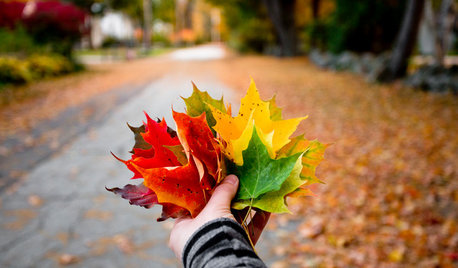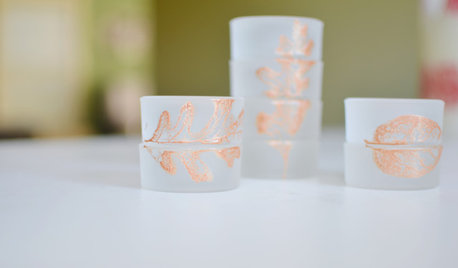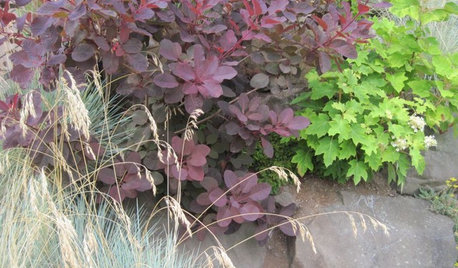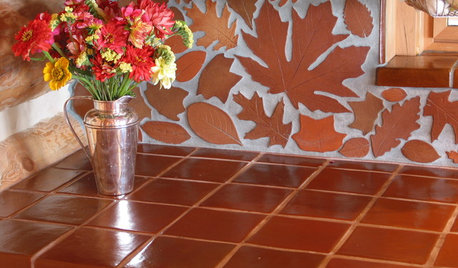Propagation from a leaf
iduloveplants
15 years ago
Featured Answer
Sort by:Oldest
Comments (17)
amany
15 years agoiduloveplants
15 years agoRelated Discussions
Grape propagation from a single leaf ???
Comments (6)I have done it using a covered seed starter tray, in mostly perlite with a little peat. The seed starter has a fabric wick thats draws water up to the base of the cuttings. The bud will usually start to push just as the roots start to form. I bury the stem, which is about one inch long, with just the leaf sticking up. If the leaf is too big, you can trim it down smaller....See MorePropagation from leaf cuttings
Comments (2)This is the easiest way to root violets that I know. I have rooted hundreds of violets using this method. Violets like to be watered from the bottom, as a rule. They don't like water on their leaves. Aluminum plant, I am not familiar with. I will have to look that one up. Good Luck! Janie Here is a link that might be useful: Propagating Violets...See MoreCan I propagate from this leaf?
Comments (4)Tuberous begonias grow easily from stem or leaf cuttings. Young growth works best and cuttings should be taken early in the year. The plant grown from the cutting needs time to grow itÂs own tuber before it goes dormant the next fall, so the earlier the better. Tuberous begonias donÂt root well in water, except for the smaller stemmed types like the caudex forming types and B. sutherlandii. Most tuberous stem cuttings will start directly in potting mix (I prefer sand). They may look wilted initially but most will eventually root and recover. ItÂs best to keep them in shade until they have rooted. Leaf cuttings should be started as you would rhizomatous begonias....See MorePelargonium propagation from LEAF?
Comments (3)if truely interested search on In-vitro system of micropropagation ...Tissue Culture. I have experienced reasonable success with calloused, un-rooted vegetative cuttings and rooting them under intermittent mist at a soil temp of 72F. I prefer using Cloromone rather than Hormodin but with either product I only improve root emergence by 3 days over no hormone....See Morechazparas
15 years agoiduloveplants
15 years agochazparas
15 years agoiduloveplants
15 years agoMentha
15 years agotapla (mid-Michigan, USDA z5b-6a)
15 years agoiduloveplants
15 years agoMentha
15 years agoamccour
15 years agotapla (mid-Michigan, USDA z5b-6a)
15 years agoMentha
15 years agoiduloveplants
15 years agoMentha
15 years agoamccour
15 years ago
Related Stories

TRAVEL BY DESIGNHouzz TV: Take a Leaf-Peeping Road Trip in New England
Ride along with a Houzz contributing photographer to see gorgeous autumn eye candy from New York to New Hampshire
Full Story
CRAFTSCelebrate Fall With Silk-Screened Leaf Candleholders
An unexpected twist takes these stackable embellished candleholders from wonderful seasonal decor into the realm of art
Full Story
ARCHITECTURETry a Four-Leaf Design That Spans the Ages
No one's sure exactly what the quatrefoil represents, but its striking effect in all kinds of designs is certain
Full Story
DECORATING GUIDESA Glimmer of Gold Leaf Will Make Your Room Shine
Make a unique, unexpected statement in any space with this precious metallic finish
Full Story
DESIGN DICTIONARYDrop-Leaf Table
The leaves of drop-leaf tables can be folded down to save space or raised to create a bigger surface
Full Story
CONTAINER GARDENS8 Easy Container Plants to Grow From Seed
Get beautiful blooms and herbs in summer by starting these choice garden picks from seed in spring
Full Story
TROPICAL STYLEEasy Decorating: Turn Over a New, Tropical Leaf
Toss a palm frond in a vase or gather a whole bouquet — fresh or preserved tropical leaves bring on the exotic with almost no effort
Full Story
PURPLE FOLIAGE5 Purple-Leaf Majesties of Shrubs
Looking for beautiful depth and dynamism in your landscape? Just add purple
Full Story








Oklahoma_Tim